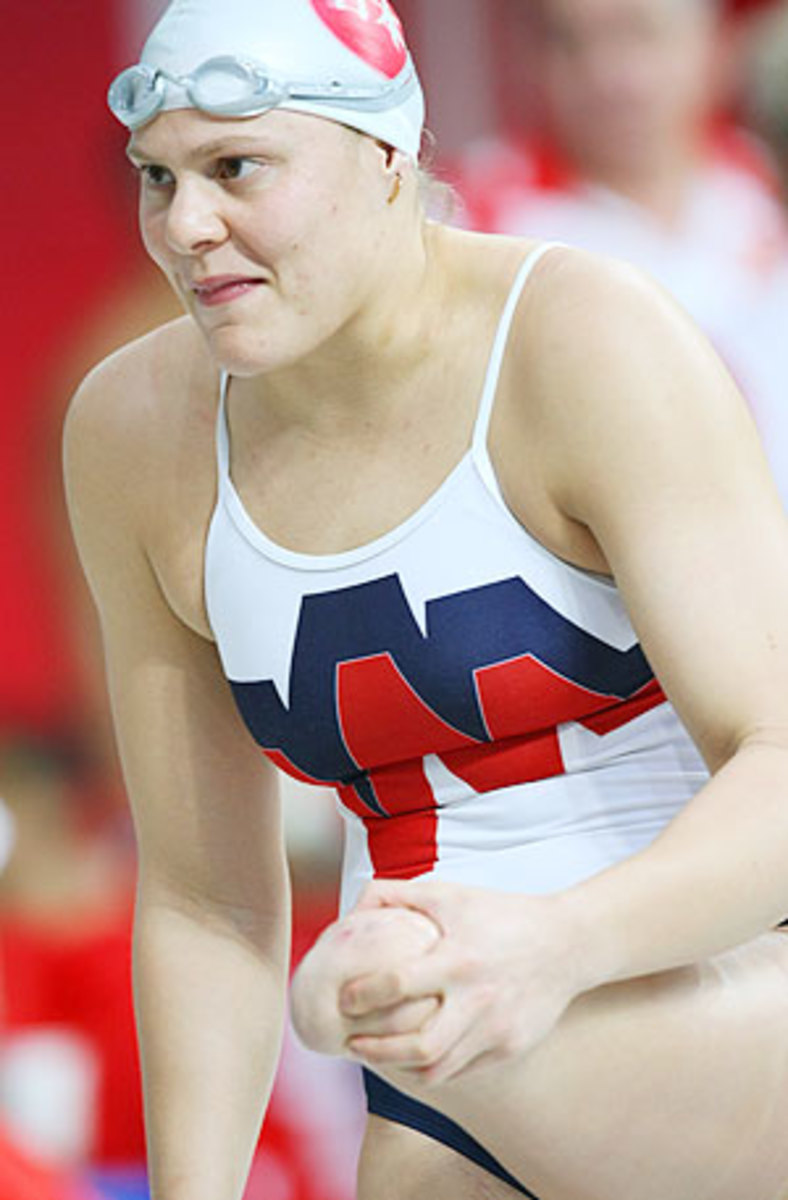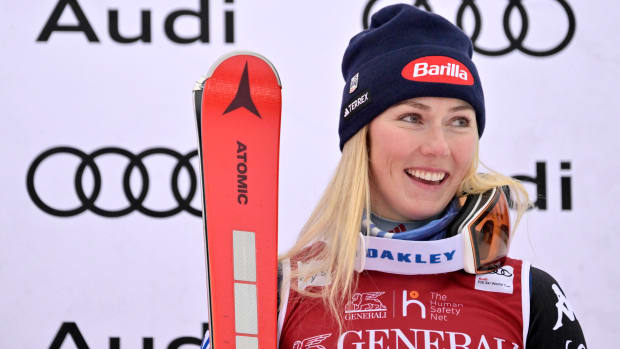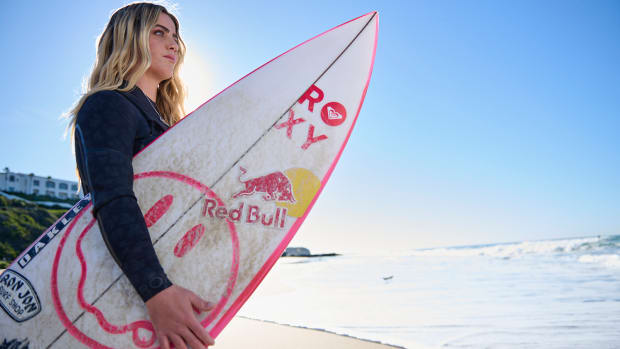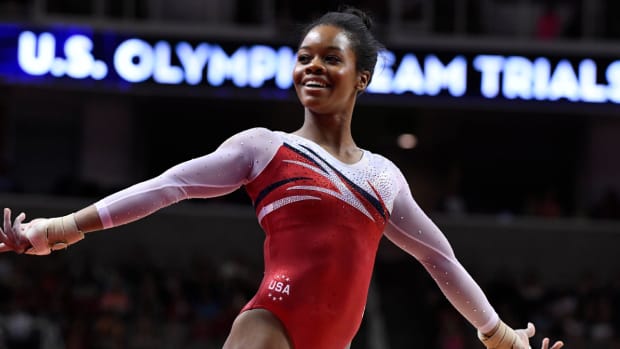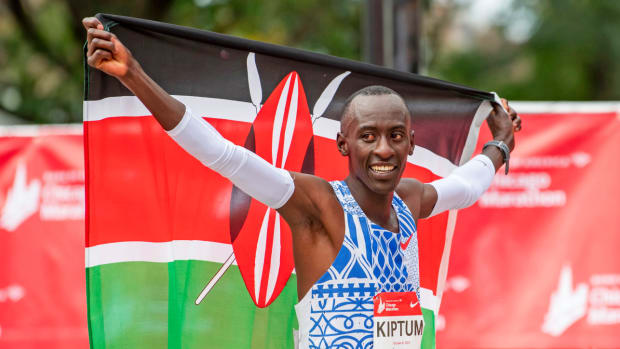South Africa's du Toit gives full effort for open water swim's debut
Only one woman could win the gold medal in the 10k marathon swim, but before the 25 contenders even dove into the water, Wednesday was already a day full of firsts.
This was open-water swimming's Olympic debut -- no small deal -- but perhaps more important, it was the first time the world, and in particular the mainstream media, had paid it any attention.
Open-water swimming is to the pool what the 26.2-mile marathon course is to the track, which would make it a seemingly logical addition to the Games. But though sports like triathlon, beach volleyball, and synchronized diving had all managed to squeeze their way into the schedule, open water's been a late arrival to the party.
"This is a new sport for the girls," said British coach Sean Kelly, standing at the water's edge this morning. "It's a new sport for everybody."
Well, not exactly everybody, and therein lies open water's challenge. First, you've got the skill factor. While American parks are filled on summer weekends with people competing in mini-triathlons and 10k runs, it's the rare human who can slip into the ocean, lake, or river and reel off a smart 6.2 miles. (And by the way, many races are swum in water temperatures below 65 degrees.)
Then there's the fear factor. The allure of open water is often found in its mystery: What lies beneath the surface? What waves and currents and stinging, biting critters might be encountered? Many people prefer to admire open water's beauty from shore. And then, adding to both of these things, is the intimidation factor.
Though open water swimming may appear a rather placid sport, it's actually a full contact aquatic roller derby. There is punching, kicking and slashing; the ripping off of goggles and caps; there are elbows rammed into eye sockets, and hands grabbing at legs. Overt violence is illegal according to the official rules, but some amount of jockeying within the pack is inevitable and anyway, the judges can't see underwater.
When you add all of these things together, this isn't a sport for the faint-hearted. Which brings us to Wednesday's most impressive first of all: When the 25 female competitors lined up for the open water start, among them was Natalie du Toit, a 24-year-old South African. Du Toit, who qualified for Beijing with a fourth-place showing at the 2008 World Championships in Seville, Spain, happens to be missing the lower half of her left leg. As she dove in at the Shunyi Rowing-Canoeing Park, she became the first amputee to compete in Olympic swimming.
"For me, this is a dream come true," du Toit said. "I want to race against able-bodied athletes. I don't want a free ride."
She hasn't gotten one, to say the least. In 2001, du Toit, a promising young swimmer aiming for the Athens Games, was pulling out of morning swim practice on her motor scooter when she was hit by a car. The accident was horrific -- du Toit's leg crushed. As she described it to TheNew York Times, her leg "burst like a tomato dropped to the ground." While her doctors tried for a week to reconstruct the pulverized bone and muscle, transplanting an artery from her right leg into her left, the attempts failed and du Toit's left leg was amputated just below the knee.
There were dark moments in the aftermath, du Toit admits, flurries of what-if's and why-me's, but she refused to let them take over. Instead, five months later, she dove back into the pool. Du Toit learned to swim again; to balance in the water in new ways, teaching her body to compensate for the loss. The process was, she says, "excruciatingly painful."
In '02, she made South Africa's Commonwealth Games team, competing in the 800 freestyle final against a field of able-bodied swimmers. This was a first, and notice served that du Toit wasn't about to give up. And earlier this month, she carried South Africa's flag in the opening ceremony here in Beijing.
Now, Swimmer No. 23 stood on the floating platform as the starter called the swimmers to attention. Her carbon leg was set off to the side, and she stood on her right leg and dove in. The swimmer next to her, Britain's Keri-Anne Payne, shot to the front with her teammate, Cassandra Patten. Both Payne and Patten had also competed at the Water Cube -- Payne in the 200 and 400 individual medley and Patten in the 800 free. (Another first: Patten was the first swimmer to qualify for both the Olympic pool and open water events.)
The water that stretched out in front of them was as flat as glass. But behind them, in their wake, was a washing machine of chop, as the 23 other swimmers fought for the best positions.
As the women settled into their rhythm, three-time 10k world champion Larissa Ilchenko, 19, from Russia, claimed the ideal spot, right behind Payne and Patten. Though leading the race requires more effort than drafting, in open water it also has its advantages; the two Brits could chart their own course, unsubjected to the kind of thrashing that du Toit, and American Chloe Sutton, 16, were enduring midway back.
"It was a bit rough in the pack," du Toit would say later. "There was some dunking going on. It's always dangerous but you just have to make sure you don't panic."
When the aerial camera panned onto du Toit, 30 minutes into the race, her cap had been partially ripped off and her hair was hanging in her face. Like Michael Phelps during his equipment malfunction earlier in the week -- when his goggles filled with water in the 200 butterfly finals -- du Toit just kept swimming. Sutton wasn't faring much better. At the second feed zone she stopped to take a bottle from the pole that her coach held out, and was steamrollered by the women behind her. When she recovered and began to swim again, she was off the back.
The course was long and straight, a featureless expanse of water that had been criticized by some swimming world insiders for being less than a true open water challenge, with all of nature's unknowns in the mix. The Rowing-Canoeing Park is about as man-made as it gets, gouged out of what is basically a giant field an hour outside of Beijing. It is not a beautiful place. The water is a dull swamp green and only two meters deep. And most excruciatingly, the water temperature is 83 degrees. For swimmers, this is Hades hot. The air offered no solace -- it was blast-furnace hot, without the slightest breath of wind.
As the women rounded their final turn onto the kilometer-long home stretch, Payne and Patten were still out front, side by side, but the pack had splintered. Six swimmers appeared to be in contention, including Ilchenko, Germany's Angela Maurer, Brazil's Poliana Okimoto, and Venezuelan swimmer Andreina del Valle Pinto Pérez. At 800 meters, the Russian made her move, and in the tumult one of the swimmers yanked Patten's foot so hard that she came to a complete halt.
In the end, it came down to who had the most in reserve. After leading the entire race with Ilchenko tapping on her toes, Payne was at a disadvantage and she must have known it. With 150 meters left, the Russian sprinted around her and won, in a time of 1:59.27.7. Payne took silver, 1.5 seconds later; Patten, right behind her, took bronze. Chloe Sutton finished in 22nd place. And the inimitable du Toit? She finished 16th in 2:00:49.9, not the position she'd hoped for but remarkable nonetheless.
"I find it hard swimming this event and I am able bodied," Payne said at the finish, noting her admiration. For her part, Ilchenko suggested that du Toit be given a separate medal, but that kind of consolation prize is exactly what the South African does not want. "When I get in the water, it is one of the few times I forget about the leg and I am completely free," du Toit once said.
If the past is any indication, du Toit will be back. And she'll be the one tapping on Ilchenko's toes.
